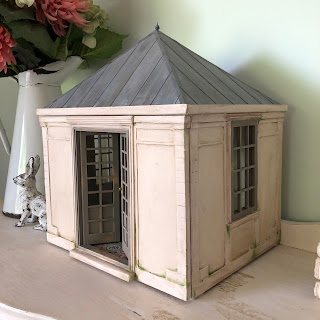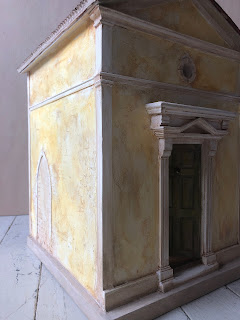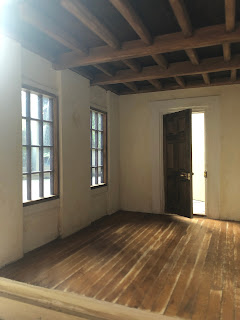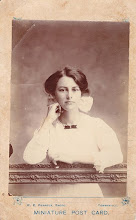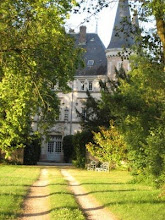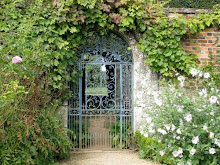It has been an age since I last posted!. Lots of changes, yeah life does that. Kids grow becoming self sufficient, most of the last two years spent dodging drought, fires, flooding and pandemics, travelling in the teeny moments that are 'safe' and Instagram is just easier. I post mostly there now. As well as having albums on my Lavande House Fb page.
The reason for this post is to show how I did the roof tiling on my recently finished Tuscan inspired project I called Tosca. More space to do it here than Ig. The choice of name purely because while I was intensly focused on sanding the walls of my new unnamed project my rather large Tosca print decided to dismount from the wall making so much noise on it's descent that I yelled and jumped and well it became Tosca after that. Anyhoos the tiling. This is just a way I did it, super easy and so cheap. I fully subscribe to easy and cheap projects!!!! There are actaully a variety of clay tile styles in RL but this is just one way I worked out.


Cardboard, the stuff from packing boxes not the cereal packet kind. I used two different boxes. A heavy duty double thickness packing box (Bunnings), this gives the stacked tile end look. I only used it here. A smaller box I already had for the tile strips. Not all corrugations are the same. The box I used for the tiling had more more corrugations per inch and I liked that look better for this project.
From the heavy duty box I cut out two peices that would cover the roof. I didn't have them met up completely at the top, about a 5mm gap. At the time I had no idea what I was going to do there. I painted the ends in terracotta. Get right in the grooves as much as possible. Bit of raw umber dry brushing here and there.
You can see here the heavty duty cardboard and it's double thickness I used the exposed ends to get tha stacked tile look. It has a name and I can not remember it at all now. Glue it onto your project. There was already ply roof pieces on my project and I glued the cardboard to that.
To get to the corrugation you need to remove one of the paper sides from your cardboard. The best way to do this is to dampen it with a rather wet cloth. Once you can see the paper soak up the water you can start to peel it away as the glue starts to dissolve. I found running a skewer down each groove as I genlty pulled helped. Don't want to pull it too much or get it too wet. Try to take it off in as larger pieces as you can as you will use it for the capping tiles. To get the most of the remaining tags of paper off I ran a piece of folded sand paper down each one. I didn't get them all out and it doesn't show. Then paint it terracotta and when dry some random dry brushing with raw umber. You will more than you think!!
I cut my strips at 1 inch. I then painted one edge with the terracotta, this is the edge that you will be able to see when glued on. As you can see I then removed the backing paper from along just the one edge, the painted edge. The papered edge gives something for the glue to hold to and holds the corrugations together but the exposed edge acts to lock the strips together in alignment as it overlaps
While standing a the side of my house I worked from the front of the house to the back when applying the strips. On the end of each strip cut it right to the bottom of a groove. Remove that paper tag for this and the next groove as these will be folded over the end when you start each row.
Glued my first strip sitting right on the bottom edge of the roof with the with the two free grooves sticking out from the end. I waited till the glue had dried before getting the ends tucked in.
I used the pointy end of a skewer and ran it down the between the cardboard glued to the house and the house itself. This made a little space and this is where the end of each roof strip is stuck into with a little bit of glue. Again using the pionty end of a skewer to help it in. Or my nail. Do the same for the other end. Trim off at the bottom of the groove. Remove the backing paper and tuck in the ends, etc.
I ran a line of glue across the exposed ridges and then a line one the roof, overlocking each piece about 5mm. Repeat till done!!
For the top I cut a length of 9mm balsa dowel to fit the groove at the top with just a teeny little bit extra, glue it in. Taped off an area so that the gap between the dowel and the roof tiles can be filled with spak.
I mushed spak into the ends and used a skewer to shape it a bit.
For capping tiles I painted the paper I had taken off earlier. I use the same paper as the colour will match up and this paper is quite tough when it gets damp. Paint it up the same as the tiling. I cut 14mm strips cut into 25mm lengths. For the two end pieces I glued two together just to give it a bit more body and to make it look more to scale.
For the bottom roof edges I tapped it off so that I would'nt get any spak on my tiles. Make sure my tape isn't too sticky by sticking it onto my clothing or something first. Hate it when it takes my paint off. I then just pushed the spak into the groves. I could've done this before the tiling but I had run out of spak. Let it dry and apply more when needed as it shrinks. Remove the tape. I then painted the spak edge and roof capping area with a dirty paint wash to take away all that whiteness. Sealed it all with matte varnish to protect it.
That's it! Gee I hope this is all understandable. I love this roof look and was something I had been working on for a while when I had a lightbulb moment one night. I hope this helps and I love to share it!!
What I used:
Heavy duty packing box (Bunnings) - roof base.
Box - tiling strips.
Paint - Kaisercraft terracota, Chromocryl raw umber.
Blue tape.
Box cutter.
Scissors.
Soudal glue.
UniPro filler.
Take care!
Carriexx



